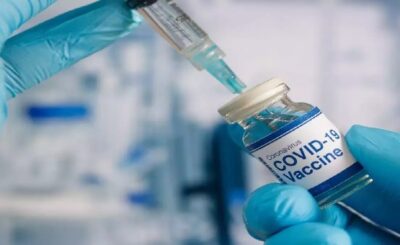Compiled by V.V.S. Manian
In 2023, the world focused on preventive care, increased access to telemedicine, and the use of AI to improve patient outcomes. Here are the important medical advances made in 2023.
A New prostate cancer treatment for men
MRI-guided Transurethral Ultrasound Ablation, or TULSA, is a novel MRI-guided procedure that uses therapeutic ultrasound to effectively treat prostate cancer with minimal side effects. TULSA is a minimally invasive procedure that, under MRI guidance, delivers precise doses of therapeutic ultrasound to treat prostate cancer while sparing the healthy nerve tissue surrounding the prostate.
Better cancer screening for dense breasts
Cancer risk is up to four times higher in dense breasts, possibly because dense tissue has more cells that can become abnormal, and women with dense breasts may have higher levels of estrogen, which can increase the risk of cancer. Conventional mammograms may miss up to 40 to 60 percent of cancers in dense breasts.
Delphiniums’ SoftVueTM is a fast, fully automated 3D whole breast ultrasound tomography system first-ever developed in medical imaging for dense breast cancer screening in addition to mammography. The SoftVueTM system represents a breakthrough in tissue characterization based on transmission signals and satisfies the unmet clinical requirements for early breast cancer detection in asymptomatic women with dense breast tissue. It also provides a unique annual screening solution for the group.
Photo3
Continuous Glucose Monitoring System
The Continuous Glucose Monitoring System is for those who wish to understand the fluctuations in their blood sugar levels throughout the day. A continuous glucose monitoring system (CGMS) is a small wearable device that tracks your glucose every 15 minutes throughout the day and night for 14 days. It gives you a wholesome picture of your blood sugar levels in the body. CGMS is a minimally invasive technique for measuring glucose. It measures the sugar every 15 minutes, 96 readings every 24 hours, and 1344 readings in a single prick over a 14-day period. CGMS can be used whether you wear a pump or use injections for your insulin delivery.
A tiny electrode called a glucose sensor is inserted under the skin to measure glucose levels in the tissue fluid. It is connected to a transmitter that sends the information via wireless radio frequency to a monitoring and display device. The device can detect and notify you if your glucose is reaching a high or low limit.
Photo4
A new way to bust blood clots
The occlusion of small lung arteries is the main cause of the reduction in blood flow in patients with acute pulmonary embolism. The more occlusions that a patient has, the lower the chances of survival. Patients who survive may, over some time, be highly prone to developing chronic thromboembolic pulmonary hypertension (CTEPH), which is a life-threatening condition due to increased blood pressure in the lungs. Occlusions are usually treated by relieving the obstructions in both large and small arteries. Now, new research reveals that a novel catheter, which has already proven effective in reducing blockages in lung arteries, can also reduce blockages in the smaller segmental pulmonary artery branches, which are ultimately responsible for oxygenating the blood in the lungs.
The Bashir Endovascular Catheter is a device that’s threaded through the blood vessels to the lungs, then opens into an expandable infusion basket in the clot, creating multiple channels to allow for blood flow, while the catheter’s arms spray a clot-dissolving drug directly into the clot. Photo5 Green light for CRISPR gene editing
The treatment, called Casgevy, targets sickle cell disease by helping patients produce healthy hemoglobin. In people with the disease, hemoglobin is abnormal, causing red blood cells to become hard and crescent-shaped, which can block blood flow. By March 2024, the FDA (US) will decide whether the same therapy can be used to treat beta-thalassemia, a disorder that reduces hemoglobin production.
Photo6 Slowing down Alzheimer’s
The Alzheimer’s drug lecanemab (brand name Leqembi) won full FDA approval in July. Iecanemab removes the amyloid plaques that build up in the brains of people with Alzheimer’s. The drug doesn’t stop the disease, but in a clinical trial, lecanemab slowed cognitive decline by about 30 percent over 18 months compared with a placebo.
Photo7
A gene therapy for muscular dystrophy
In June, the FDA approved the first gene therapy for children with Duchenne muscular dystrophy. Due to a faulty gene, people with this muscle-wasting disease don’t make the protein dystrophin, which helps keep muscle cells intact. The therapy helps the body produce a version of the missing protein.
Photo8 Guarding against RSV
Several ways to protect against respiratory syncytial virus arrived this year. In May, the FDA approved the first RSV vaccine, called Arexvy, in the United States for adults age 60 and older, and then in August, a vaccine for pregnant people, called Abrysvo, A monoclonal antibody—a lab-made antibody that mimics immune system proteins—won approval in July to protect children 2 and younger from the virus. Photo9 A pill for postpartum depression
Until August, the only medication in the United States specifically targeting postpartum depression required a 60-hour intravenous infusion in a hospital . With FDA approval of zuranolone (brand name Zurzuvae), those afflicted with postpartum depression can take an oral medication at home and experience improvement in as little as three days.
Photo10
Birth control, no prescription required
In July, the FDA ruled that the oral contraceptive norgestrel, first approved in 1973, be available without a prescription. It’s the first OTC daily birth control pill in the United States. Some public health experts argue that reducing barriers to contraception is especially important to reproductive autonomy now that state bans have limited access to abortion.
Photo11
A shot against Chikungunya
The Chikungunya virus can cause fever and severe joint pain and be fatal to newborns. In November, the FDA approved the first vaccine against the virus, which is transmitted by mosquitoes. The virus is most prevalent in tropical regions, but the FDA warns that it’s spreading to new parts of the globe.
Photo12
Narcan over the counter
The nasal spray Narcan, aka naloxone, can reverse the effects of an opioid overdose within minutes. In March, the FDA ruled that this life-saving drug can be sold over the counter.
Photo13
Tracking gazes to assist with surgery
Eye-tracking technology has found its way into healthcare, particularly in radiology and pathology, where it’s used to assess the gaze patterns of experts. Its development has potential but has been held back by the challenges of integrating gaze-tracking systems into operating rooms and the substantial costs of commercially available devices.
Photo14 Making veins easier to access
A billion cannulas are inserted each year globally and replaced every 72 hours to reduce infection risk. Insertion poses challenges, with an average success rate of 2.58 attempts. Often, patients who need it the most—trauma patients, the elderly, or children—have veins that are more difficult to access. When no access is found, a senior doctor may need to use ultrasound to access veins in the neck instead. This is risky, painful, and expensive. As a solution to the difficulties seen in venepuncture and cannulation efforts, a team of scientists at the University of Huddersfield have created a device that increases the size, visibility, and palpability of target veins within 30 seconds. These are brought together in a topical patch designed to adhere to the common sites for intravenous access. This low-cost and practical invention will reduce the costs .
Photo15 Detecting neurodegenerative diseases earlier with machine learning
Neurodegenerative disorders affect around 44 million people worldwide and cost the healthcare industry billion each year. Early detection allows for quicker action, reducing the effects on the patient and healthcare system as much as possible. Western University researchers have created a technique that incorporates a machine learning algorithm to detect early disease changes within the brain, allowing treatment interventions before the progression of neurodegeneration. It also reduces radiation risks compared with the use of radioactive tracers in current neurological disorder diagnostics. Photo16
Delivering drugs in red blood cell-derived vesicles
Vascular thrombosis, a critical medical concern, requires prompt removal of blood clots to restore blood flow. A common intervention strategy is intravenous infusion of tissue plasminogen activator (tPA), but its short half-life and susceptibility to inactivation by inhibitors pose challenges, leading to high doses that result in bleeding risks. Researchers atImperial College London have developed a novel technology involving red blood cell-derived vesicles (RBCVs) carrying targeting ligands and encapsulated active agents (thrombolytic and antiplatelet drugs). This platform enhances drug stability and controlled release while remaining compatible with various thrombolytic drugs in development. This technology holds promise for developing therapeutic solutions for thrombotic diseases such as stroke, myocardial infarction, and pulmonary embolism.
A human-machine interface that communicates through breath patterns
Human-machine interface (HMI) systems provide a solution to many of the challenges associated with completing daily tasks faced by those with severe disabilities. These systems include brain-computer interfaces, electromyography switches, and eye-gaze trackers, although their use is hindered by their invasive nature and high cost. Researchers at Case Western Reserve University have developed a cheap, innovative, and simple HMI that uses a person’s breath patterns to communicate with various devices. This provides a highly sensitive, non-invasive, and low-cost sensor to solve some of the problems faced with HMI’s available today.
Photo18 Inactivating viruses with air curtains
Scientists at Nagoya University have developed a desktop device that produces a unique ‘air-curtain’ to block aerosols. This method also uses a virus-inactivation device that irradiates the intake of air using UV rays. This technology reduces the risk of virus exposure for patients and healthcare workers during medical procedures where it is difficult to maintain a sufficient distance, such as medical interviews, blood sampling, and treatment.
Photo19 Intravenous training arm with tactile feedback and motion control
Scientists at the University Health Network (a public research and teaching hospital network in Toronto) have developed a first-of-its-kind intravenous training arm featuring tactile feedback and remote motion control. The functional prototype allows for the flexion of the index finger by remote control.
Photo20 Enriching mental health treatment with machine learning
As a response to the extreme burden put upon frontline workers during the COVID-19 pandemic, researchers at Cornell University have created an easy-to-use online tool to monitor the mental health symptoms of at-risk individuals and provide real-time treatment resources. This technology utilizes novel machine learning methods from an extensive fMRI database to objectively track quantitative scores over time and produce reliable and immediate feedback. Applications include studying psychiatric symptoms, providing cognitive behavioral therapy via apps, and providing measurable endpoints in clinical trials. A multi-system approach to improving breast cancer treatment
Breast cancer is the most prevalent cancer in women worldwide, with the standard surgical treatment being lumpectomy, in which the tumor is removed from the breast while sparing as much healthy tissue as possible. However, limitations in surgical navigation often mean additional surgeries are required. A team of scientists at Queen’s University have developed a state-of-the-art surgical navigation system using ultrasound, electromagnetic tracking, and proprietary software to improve spatial awareness in lumpectomy surgery. As a result, fewer additional surgeries will be required, reducing healthcare costs and trauma to the patient while also improving cosmetic outcomes.
Real-time detection of health conditions
Researchers at the University of Hawaii have taken note of this emerging market and deployed rapid fabrication technology to create a stretchy, multi-layered’sweat sticker’ that can be retrofitted to analyze for specific conditions and provide real-time data for health tracking purposes. The technology uses a simplified and streamlined 3D printing process to create multi-purpose sensors that can be applied to patients of all ages in order to provide a more cost-effective and non-invasive method of tracking chronic health conditions.
Photo21 Personalised, AI-informed orthopaedic insoles for diabetes patients
Over a million people with diabetes undergo lower limb amputations each year due to poor management of diabetic foot problems, including foot ulcers, infections, and gangrene. To reduce the global burden of diabetes-related amputations, scientists at Pontificia Universidad Javeriana designed Diapetics®, a telemedicine-based technology aiding in the diagnosis, design, prescription, and manufacturing of personalized orthopedic insoles. By leveraging artificial intelligence to integrate and analyze gathered patient data, Diapetics® allows for the creation of truly personalized orthopedic insoles in an automated and reliable manner.
Photo22 Novel antibiotics for gram-positive bacteria
Researchers working at the University of California, Irvine, have designed a new class of antibiotics showing promising results in the treatment of MRSA, pneumonia, & tuberculosis. The team has devised a facile synthesis of teixobactin analogues, including a novel class of teixobactin derivatives that displays promise against Gram-positive bacteria. New antibiotic modalities like this are crucial in helping to reduce the burden on the healthcare industry from antibiotic resistance, which costs the industry around $55 billion per year due to prolonged hospital admissions and the need for secondary treatments.
(To be continued)








